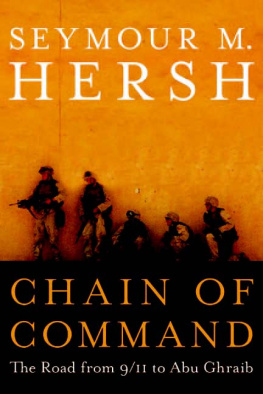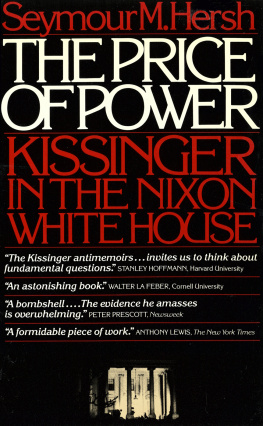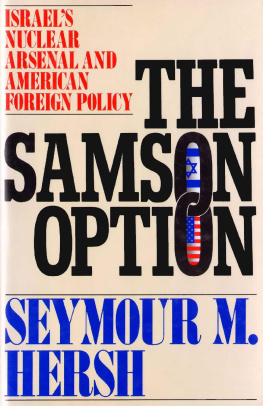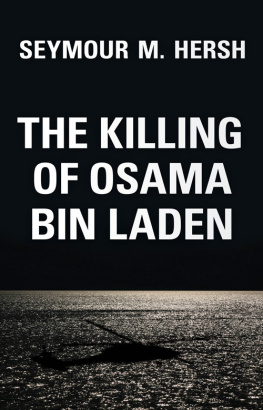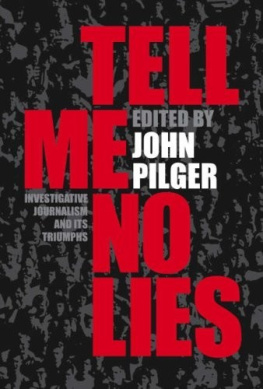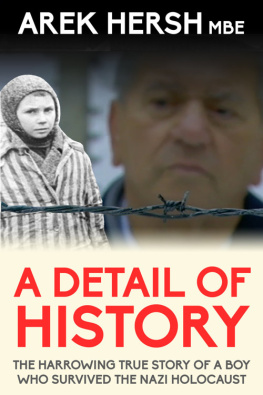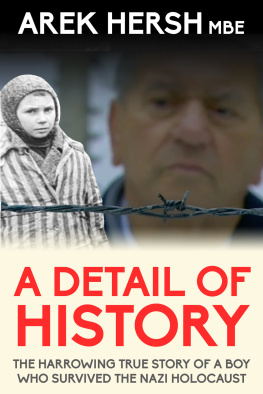CHAIN OF
COMMAND
THE ROAD FROM 9/11 TO ABU GHRAIB
SEYMOUR M. HERSH

To Matthew, Melissa, and Joshua
CONTENTS
I. TORTURE AT ABU GHRAIB
II. INTELLIGENCE FAILURE
III. THE OTHER WAR
IV. THE IRAQ HAWKS
V. WHO LIED TO WHOM?
VI. THE SECRETARY AND THE GENERALS
VII. A MOST DANGEROUS FRIEND
VIII. THE MIDDLE EAST AFTER 9/11
INTRODUCTION
On November 14, 1969, the readers of an assortment of American newspapers encountered a story with such headlines as Lieutenant Accused of Murdering 109 Civilians. It ran courtesy of the Dispatch News Service, a year-old marketing service for reporters working in Vietnam, and under the byline of a former wire-service reporter named Seymour M. Hersh. The opening paragraphs, written in a direct, laconic style, described how one morning the previous year soldiers of the Armys 11th Infantry Brigade went on a killing rampage in the Vietnamese hamlet of My Lai:
Fort Benning, Ga., Nov. 13Lt. William L. Calley Jr., 26 years old, is a mild-mannered, boyish-looking Vietnam combat veteran with the nickname Rusty. The Army is completing an investigation of charges that he deliberately murdered at least 109 Vietnamese civilians in a search-and-destroy mission in March 1968 in a Viet Cong stronghold known as Pinkville.
Calley has formally been charged with six specifications of mass murder. Each specification cites a number of dead, adding up to the 109 total, and charges that Calley did with premeditation murder Oriental human beings, whose names and sex are unknown, by shooting them with a rifle.
The Army calls it murder; Calley, his counsel and others associated with the incident describe it as a case of carrying out orders.
Pinkville has become a widely known code word among the military in a case that many officers and some Congressmen believe will become far more controversial than the recent murder charges against eight Green Berets.
As it turned out, soldiers of the 11th Brigade had killed five hundred or more civilians that morningmainly women, children, and elderly menin what had started out as a search for Vietcong soldiers. They shot some from helicopters, others from the ground and at point-blank range. There were rapes, torture, babies and young children shot. After hours of killing, the soldiers set fire to the hamlet and left behind a landscape of corpses.
Working on a tip from a lawyer and with a modest grant from the Fund for Investigative Journalism, Hersh arrived at the Armys base in Fort Benning and went from building to building looking for Calley, who was awaiting court-martial proceedings. Knocking on doors, and avoiding the pursuit of officers on the base, Hersh finally encountered Rustya former railroad switchmanand asked to talk to him. After they had talked for three or four hours, they went to a local grocery store, bought steaks, bourbon, and wine, and ate and talked some more at the apartment of Calleys girlfriend. Calley told Hersh that he was only following orders at My Lai, but he spoke freely about what had happened. A total of thirty-six newspapers ran the story, eventually causing a sensation, and sometimes disbelief, in the journalism world and beyond. When a Pentagon reporter from the Washington Post was charged with following up the My Lai stories, he called Hersh and said bitterly, You son of a bitch, where do you get off writing a lie like that?
The jealousy and bewilderment among his competitors was, perhaps, understandable. Hersh was thirty-two when he broke the story of My Lai and not at all well-known. He had plenty of connections in newspapers, but he was working freelance on My Lai. With the help of a friend, David Obst, he sent the story via Telex, collect, to dozens of newspapers. Although soldiers in the unit spoke to Hersh extensively and in the most horrifying terms, and Calleys own lawyer was willing to confirm the story, some of the big papers, including the New York Times, did not run it. But I kept on writing, Hersh has said, and by the third story I found this amazing fellow, Paul Meadlo, from a small town in Indiana, a farm kid, who had actually shot many of the Vietnamese kidshed shot maybe a hundred people. He just kept on shooting and shooting, and then the next day he had his leg blown off, and he told Calley, as they medevaced him, God has punished me and now he will punish you. After Hersh published that interview, CBS put Meadlo on the evening news and the story broke open. The next year, Hersh won the Pulitzer Prize, a rarity for a freelancer.
By the time Hersh was ready to write a book about the massacre, My Lai 4, he had interviewed dozens of participants and officials and discovered myriad macabre details, including how Colonel George S. Patton IIIson of the Pattonsent out a Christmas card reading Peace on Earth with photographs of dismembered Viet Cong soldiers stacked in a neat pile. In 1972, he published a long account of the governments secret investigation and coverup of the My Lai massacre in The New Yorker.
It is an open secret in journalistic circles that reporters, like detectives and sprinters, lose their legs. Eventually, they go to grass, they retire, they get desk jobs, they become columnists or, worse, editors. Sy Hersh is my colleague and friend, but I also know that his general regard for editors can best be reflected in what the late Shirley Povich, of the Washington Post, used to say of the breed: An editor is a mouse training to be a rat. Hersh, who is in his mid-sixties, is a reporter and he always will be. If anything, he has even more energy now than he did in his thirties. And the results are plain: his work for The New Yorker during the Administration of George W. Bush, which is reflected in this book, represents an achievement, journalistic and even moral, as striking as his reports on My Lai.
Hershs parents were immigrants from Lithuania and Poland who came to Chicago and eventually opened a dry-cleaning store on the South Side. His father, Isidore, died when Hersh and his twin brother were just seventeen. At the University of Chicago, Hersh majored in history, but he also spent a lot of time doing crossword puzzles, playing bridge, and hanging out. He spent less than a year at the law school there before he was kicked out for poor grades. His first job out of school was as a liquor-counter clerk at Walgreens at $1.50 an hour. This was not a wholly satisfying line of work. He got a job at the City News Bureau, where he began his distinguished career covering such stories as a fire in a manhole. After a stint in the Armyhe was a public information officer at Fort Riley, Kansashe worked for U.P.I., then for the A.P. as a Pentagon correspondent. He quit the A.P. in 1967 after his editors diluted and cut a story he had written investigating the governments development of biological and chemical weapons. After selling a version of the story to The New Republic, he spent a few months working as press secretary and speechwriter for Eugene McCarthy, and then he got serious again about his career as a reporter.
With his stories on My Lai, Hersh joined a tradition of muckrakers, including Upton Sinclair, Ida Tarbell, Lincoln Steffens, Rachel Carson, and I. F. Stone. Theodore Roosevelt had adapted the term from Bunyans Pilgrims Progressthe man who was offered a celestial crown for his muckrake, but who would neither look up nor regard the crown he was offered, but continued to rake to himself the filth of the floorin order to criticize reckless journalists, like David Graham Phillips, who were attacking some of his allies in the Senate for their fealty to corporate interests. After My Lai, Hersh applied his rake to a huge variety of fields of public endeavor and malfeasance. In his career, as a freelancer and as a staff writer for both the

